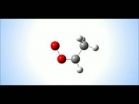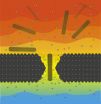(Press-News.org) BUFFALO, N.Y. – Patients with chronic obstructive pulmonary disease (COPD) report improved symptoms and health status when they use a hand-held respiratory device called the Lung Flute®, according to a new study by the University at Buffalo. Usually caused by smoking, COPD, which includes chronic bronchitis and emphysema, is the third leading cause of death in the U.S.
The Lung Flute, manufactured by Medical Acoustics, (Buffalo), uses sound waves to break up mucus in the lungs. The device allows patients to clear lung mucus simply by blowing into the hand-held respiratory device, which produces a low frequency acoustic wave.
Published on Sept. 23 in Clinical and Translational Medicine, the 26-week study demonstrates that patients using the Lung Flute experience less difficulty breathing and less coughing and sputum production than a control group, which saw no change in COPD symptoms.
"This study confirms that the Lung Flute improves symptoms and health status in COPD patients, decreasing the impact of the disease on patients and improving their quality of life," says Sanjay Sethi, MD, principal author of the study and professor and chief, division of pulmonary, critical care and sleep medicine in the Department of Medicine, UB School of Medicine and Biomedical Sciences.
Photos of the Lung Flute and Sethi are at http://www.buffalo.edu/news/releases/2014/09/051.html.
The device is approved by the Food and Drug Administration (FDA) to treat COPD and other lung diseases characterized by retained secretions and congestion. It also is approved by FDA to obtain deep lung sputum samples for "laboratory analysis and pathologic examination."
Colleagues of Sethi's in the UB medical school are now studying the Lung Flute for use in improving symptoms in asthma. The device is also being investigated for diagnostic use in tuberculosis and lung cancer.
The study followed 69 patients with COPD for six months; it was conducted at the Veterans Affairs Western New York Healthcare System (Buffalo VA) by researchers at the UB medical school.
"This study confirms and extends the results of a previous, 8-week study of 40 patients that was conducted in 2010 to obtain FDA approval for the Lung Flute," says Sethi, whose clinical practice is at the Buffalo VA.
He has led a series of clinical trials demonstrating the safety and efficacy of the Lung Flute, including those that played a key role in the FDA's approval of the device for diagnostic and therapeutic uses.
Improvement in the current study was demonstrated by responses reported by patients on the Chronic COPD Questionnaire, which assesses changes in COPD symptoms and the St. George's Respiratory Questionnaire, which measures quality of life. On both questionnaires, patients using the Lung Flute reported significant improvements.
In addition, the Body-Mass Index, Airflow Obstruction, Dyspnea and Exercise Capacity (BODE) score was measured repeatedly in the study. "The BODE index provides a more comprehensive assessment of COPD patients," explains Sethi. "As the disease worsens, the BODE index goes up as it did in the control group. But for patients using the Lung Flute, the BODE index stayed flat."
Sethi adds that the study points to a potential decrease in exacerbations, flare-ups of respiratory symptoms, as a result of using the Lung Flute. Researchers are planning longer-term studies that will focus specifically on how the device affects exacerbations, a key part of what makes COPD patients sicker and leads to health care utilization.
Sethi notes that while similar devices have been developed for cystic fibrosis, the Lung Flute is the only one that has undergone extensive testing specifically for COPD patients. In a previous study comparing a device developed for cystic fibrosis with the Lung Flute, the Lung Flute was superior for COPD patients.
"All therapeutic studies on using the Lung Flute for COPD have been done here in Buffalo," says Sethi. "We have the biggest database by far on using the device in COPD. The Lung Flute is the only one that has been tested and been clearly shown to benefit COPD patients."
The research is the result of a partnership between UB and Medical Acoustics.
"Medical Acoustics has worked closely with UB's medical school since the company's founding in 2002," says Frank Codella, chief executive officer at Medical Acoustics. "We are very fortunate to have had access to UB's vast resources, including medical researchers of the caliber of Sanjay Sethi and his team, to lead many of the Lung Flute's clinical trials.
"Dr. Sethi is recognized as one of the leading COPD research professionals in the United States," Codella continues. "His research has resulted in the Lung Flute receiving FDA clearances for both obtaining deep lung sputum samples for diagnostic use and for airway clearance therapy as well as a series of Phase IV studies such as the one being reported this week."
Adds Sethi: "The people at Medical Acoustics are open-minded and I was willing to help because I saw an unmet medical need. Our relationship satisfies my goal of getting therapies to patients, while it helps the company succeed, satisfying their goals of creating a viable business. That's the way academia and industry partnerships should work."
INFORMATION:
The research was funded by Medical Acoustics and by the UB Center for Advanced Biomedical and Bioengineering Technology, which is funded by NYSTAR, Empire State Development's Division of Science, Technology and Innovation.
Co-authors with Sethi are Jingjing Yin, PhD, who earned her doctorate at UB's Department of Biostatistics in the School of Public Health and Health Professions and Pamela K. Anderson, currently manager of the Clinical Trials Office in UB's Clinical and Translational Research Center.
UB study: COPD patients breathe easier with Lung Flute
Six-month study demonstrates longer-term benefits to patients from device made by Buffalo-based Medical Acoustics
2014-09-26
ELSE PRESS RELEASES FROM THIS DATE:
Penn chemists observe key reaction for producing 'atmosphere's detergent'
2014-09-26
VIDEO:
Earth's atmosphere is a complicated dance of molecules. The chemical output of plants, animals and human industry rise into the air and pair off in sequences of chemical reactions. Such...
Click here for more information.
Earth's atmosphere is a complicated dance of molecules. The chemical output of plants, animals and human industry rise into the air and pair off in sequences of chemical reactions. Such processes help maintain the atmosphere's chemical balance; for ...
National Geographic/GlobeScan study reveals increased concern about environment
2014-09-26
WASHINGTON (Sept. 26, 2014)—A new global analysis released today by the National Geographic Society and GlobeScan finds that concern about environmental problems has increased in most countries surveyed, and that more people now expect global warming will negatively affect them during their lifetime than in 2012. Despite this, National Geographic's Greendex, a comprehensive measure of consumer behavior in 65 areas related to housing, transportation, food and consumer goods, shows that sustainable consumer behavior has only grown slowly.
Results of the 2014 Greendex, a ...
Strategy to reduce side effects in modern cancer therapy
2014-09-26
This news release is available in German. An interdisciplinary team of researchers from the University of Vienna (Institute of Inorganic Chemistry) and the Medical University of Vienna (Institute for Cancer Research) has successfully developed a new strategy for reducing the often serious side effects of an important class of modern anticancer drugs (tyrosine kinase inhibitors). The novel drug is supposed to restrict its activity with high selectivity to the malignant tumour.
The occurrence of severe side effects and the development of resistance are two of the biggest ...
Sensitive youngsters
2014-09-26
Young individuals of a species are often more sensitive towards environmental stress than their adult counterparts. Scientists from GEOMAR Helmholtz Centre for Ocean Research Kiel now observed this effect in the sea star Asterias rubens from the Baltic Sea. In a long-term laboratory experiment that was conducted in the framework of the German research network BIOACID (Biological Impacts of Ocean Acidification), the researchers simulated three different levels of acidification that could be reached in the Baltic Sea by the uptake of additional carbon dioxide (CO2) within ...
Study identifies unexpected clue to peripheral neuropathies
2014-09-26
CINCINNATI – New research shows that disrupting the molecular function of a tumor suppressor causes improper formation of a protective insulating sheath on peripheral nerves – leading to neuropathy and muscle wasting in mice similar to that in human diabetes and neurodegeneration.
Scientists from Cincinnati Children's Hospital Medical Center report their findings online Sept. 26 in Nature Communications. The study suggests that normal molecular function of the tumor suppressor gene Lkb1 is essential to an important metabolic transition in cells as peripheral nerves (called ...
NASA identifies cold cloud tops in Tropical Storm Rachel
2014-09-26
NASA's Aqua satellite saw the area of strong thunderstorms with colder cloud tops had grown within the Eastern Pacific Ocean's Tropical Storm Rachel.
NASA's Aqua satellite passed over the large Tropical Storm Rachel on Sept. 25 at 4:41 p.m. EDT and the Atmospheric Infrared Sounder or AIRS instrument, saw that the extent of colder cloud tops had increased, indicating thunderstorm heights were increasing and it was strengthening. The expansion of those stronger thunderstorms also suggests that the northeasterly wind shear may be relaxing a little. The strongest thunderstorms ...
Underwater robot for port security
2014-09-26
Last week, at the International Conference on Intelligent Robots and Systems, MIT researchers unveiled an oval-shaped submersible robot, a little smaller than a football, with a flattened panel on one side that it can slide along an underwater surface to perform ultrasound scans.
Originally designed to look for cracks in nuclear reactors' water tanks, the robot could also inspect ships for the false hulls and propeller shafts that smugglers frequently use to hide contraband. Because of its small size and unique propulsion mechanism — which leaves no visible wake — the ...
Penn team studies nanocrystals by passing them through tiny pores
2014-09-26
An interdisciplinary team of University of Pennsylvania researchers has now applied a cutting-edge technique for rapid gene sequencing toward measuring other nanoscopic structures. By passing nanoscale spheres and rods through a tiny hole in a membrane, the team was able to measure the electrical properties of those structures' surfaces.
Their findings suggest new ways of using this technique, known as "nanopore translocation," to analyze objects at the smallest scale.
The research was led by Marija Drndić, professor in the Department of Physics and Astronomy ...
Geisel researchers contribute to study of trained immunity
2014-09-26
Hanover, NH - A study published in the journal Science provides support for a new—and still controversial—understanding of the immune system. The research was conducted by collaborators in the U.S. and Europe, including Robert Cramer, PhD, an assistant professor of microbiology and immunology at the Geisel School of Medicine and member of the Dartmouth Lung Biology Center, and Kelly Shepherdson, PhD, at the time a graduate student in Cramer's lab.
Typically, scientists divide the immune system into two categories: the innate immune response and the adaptive immune response. ...
New UT Dallas technology may lead to prolonged power in mobile devices
2014-09-26
Researchers from The University of Texas at Dallas have created technology that could be the first step toward wearable computers with self-contained power sources or, more immediately, a smartphone that doesn't die after a few hours of heavy use.
This technology, published online in Nature Communications, taps into the power of a single electron to control energy consumption inside transistors, which are at the core of most modern electronic systems.
Researchers from the Erik Jonsson School of Engineering and Computer Science found that by adding a specific atomic ...
LAST 30 PRESS RELEASES:
UCLA study links scar healing to dangerous placenta condition
CHANGE-seq-BE finds off-target changes in the genome from base editors
The Journal of Nuclear Medicine Ahead-of-Print Tip Sheet: January 2, 2026
Delayed or absent first dose of measles, mumps, and rubella vaccination
Trends in US preterm birth rates by household income and race and ethnicity
Study identifies potential biomarker linked to progression and brain inflammation in multiple sclerosis
Many mothers in Norway do not show up for postnatal check-ups
Researchers want to find out why quick clay is so unstable
Superradiant spins show teamwork at the quantum scale
Cleveland Clinic Research links tumor bacteria to immunotherapy resistance in head and neck cancer
First Editorial of 2026: Resisting AI slop
Joint ground- and space-based observations reveal Saturn-mass rogue planet
Inheritable genetic variant offers protection against blood cancer risk and progression
Pigs settled Pacific islands alongside early human voyagers
A Coral reef’s daily pulse reshapes microbes in surrounding waters
EAST Tokamak experiments exceed plasma density limit, offering new approach to fusion ignition
Groundbreaking discovery reveals Africa’s oldest cremation pyre and complex ritual practices
First breathing ‘lung-on-chip’ developed using genetically identical cells
How people moved pigs across the Pacific
Interaction of climate change and human activity and its impact on plant diversity in Qinghai-Tibet plateau
From addressing uncertainty to national strategy: an interpretation of Professor Lim Siong Guan’s views
Clinical trials on AI language model use in digestive healthcare
Scientists improve robotic visual–inertial trajectory localization accuracy using cross-modal interaction and selection techniques
Correlation between cancer cachexia and immune-related adverse events in HCC
Human adipose tissue: a new source for functional organoids
Metro lines double as freight highways during off-peak hours, Beijing study shows
Biomedical functions and applications of nanomaterials in tumor diagnosis and treatment: perspectives from ophthalmic oncology
3D imaging unveils how passivation improves perovskite solar cell performance
Enriching framework Al sites in 8-membered rings of Cu-SSZ-39 zeolite to enhance low-temperature ammonia selective catalytic reduction performance
AI-powered RNA drug development: a new frontier in therapeutics
[Press-News.org] UB study: COPD patients breathe easier with Lung FluteSix-month study demonstrates longer-term benefits to patients from device made by Buffalo-based Medical Acoustics





